Did you know that only a small fraction of the people who visit your website are ready to buy from you right away? It might sound surprising, but it’s true. You might assume that if someone lands on your site, they’re interested in purchasing your products or services. And while that’s partly right, the reality is that most visitors are at different stages in their buying journey. It’s like a wild journey through the wilderness—each step along the path gets them closer to a decision, but they’re not all starting from the same point.
The buying cycle is a process every customer goes through before they make a purchase. It begins when they first realise they have a problem—like planting the seed of awareness—and then progresses through several stages until they’re ready to buy. If your website is only set up to capture those ready-to-buy visitors, you’re missing out on nurturing a vast 98% of potential customers who are still finding their way! Let’s dig in and explore each stage of the buying cycle, and I’ll share some practical tips on how you can optimise your website to meet visitors wherever they are in their journey.
1. 2% Are Ready to Buy: Focus Beyond the Obvious
Did you know that, on average, only about 2% of your website visitors are immediately ready to buy? It’s easy to focus on these visitors, thinking they’re the most valuable, but what about the other 98%? These visitors are at various stages of the buying cycle, and if you’re not engaging them, you could be missing out on a garden full of potential customers just waiting to bloom.
Tip: Expand your website’s focus beyond just closing the sale. Think about how you can provide value to those still exploring. Consider adding an engaging blog, downloadable guides, or interactive content that speaks to those at different stages of their decision-making journey.
2. Awareness: Planting the Seed of Curiosity
The first stage in the buying cycle is awareness. This is when a potential customer realises they have a problem or a need but isn’t quite sure what the solution is yet. Your job here is to be a beacon of light—illuminating the path forward by providing valuable content that answers their initial questions and introduces them to possible solutions. This is where you should channel your energy and resources, like the sunshine helping a young plant to grow.
Tip: Create educational content that speaks directly to the pain points of your audience. Blog posts, infographics, videos, and how-to guides are perfect for this stage. Think about using real, down-to-earth language that cuts through the noise and builds trust, showing you’re there to guide, not sell.
3. Consideration: Nurturing the Budding Interest
Once your potential customer understands their problem, they move into the consideration stage. Now they’re weighing their options, evaluating different solutions, and considering how your product or service could help them. This is where your website should really start to shine—providing in-depth information that shows how you’re not just another option, but the best choice for their needs.
Tip: Use detailed product or service pages, comparison charts, and customer testimonials to highlight the unique benefits you offer. Consider creating engaging content like videos or interactive tools that help guide them to the best solution. Remember, it’s not about flashy gimmicks—it’s about being real and showing how you can help them thrive.
4. Purchase: Helping Them Take the Leap
The purchase stage is where all your hard work comes together. The customer has done their research and is ready to make a decision. This is a pivotal moment in their journey, and your website needs to make the buying experience as smooth and enjoyable as a stroll through a sunlit field.
Tip: Optimise your checkout process to be effortless and intuitive. Use clear calls to action, offer multiple payment options, and provide reassurances like money-back guarantees or customer support to help customers feel confident in their choice. A smooth, no-fuss checkout process can be the difference between a completed sale and an abandoned cart. Consider adding a thank-you page or follow-up email that makes them feel appreciated and welcomed into your community.
5. Repeat Purchases: Cultivating Long-Term Loyalty
The journey doesn’t end with a single purchase. The final stage of the buying cycle is repeat purchases, which are essential for the ongoing growth of your business. This is your opportunity to turn a one-time buyer into a loyal advocate who returns again and again, like a perennial plant that blooms each season.
Tip: Keep nurturing your customer relationships through personalised email campaigns, social media engagement, and regular follow-ups. Offer exclusive deals, early access to new products, or loyalty rewards to show appreciation for their continued business. Remember, your relationship with your customers is like tending to a garden—it needs regular care and attention to flourish.
Optimising Your Website for Every Stage: Meet Them Where They Are
Understanding the buying cycle is key to creating a website that meets the needs of every visitor, no matter where they are in their journey. It’s about more than just having a pretty face—it’s about providing substance, support, and a clear path forward. Start by mapping out your customer journey and identifying any gaps in your content. Are you offering enough value at each stage? Do you have content that speaks to both new visitors and returning customers?
By creating a website that guides visitors seamlessly through the buying cycle, you’ll be well on your way to turning casual browsers into loyal customers who keep coming back for more. Take a step back and view your site from your customer’s perspective. Are you meeting them where they are? Start optimising for each stage of the buying cycle today, and watch your website’s impact grow like wildflowers, blossoming into a thriving, engaged community that can’t wait to take the next step with you.






